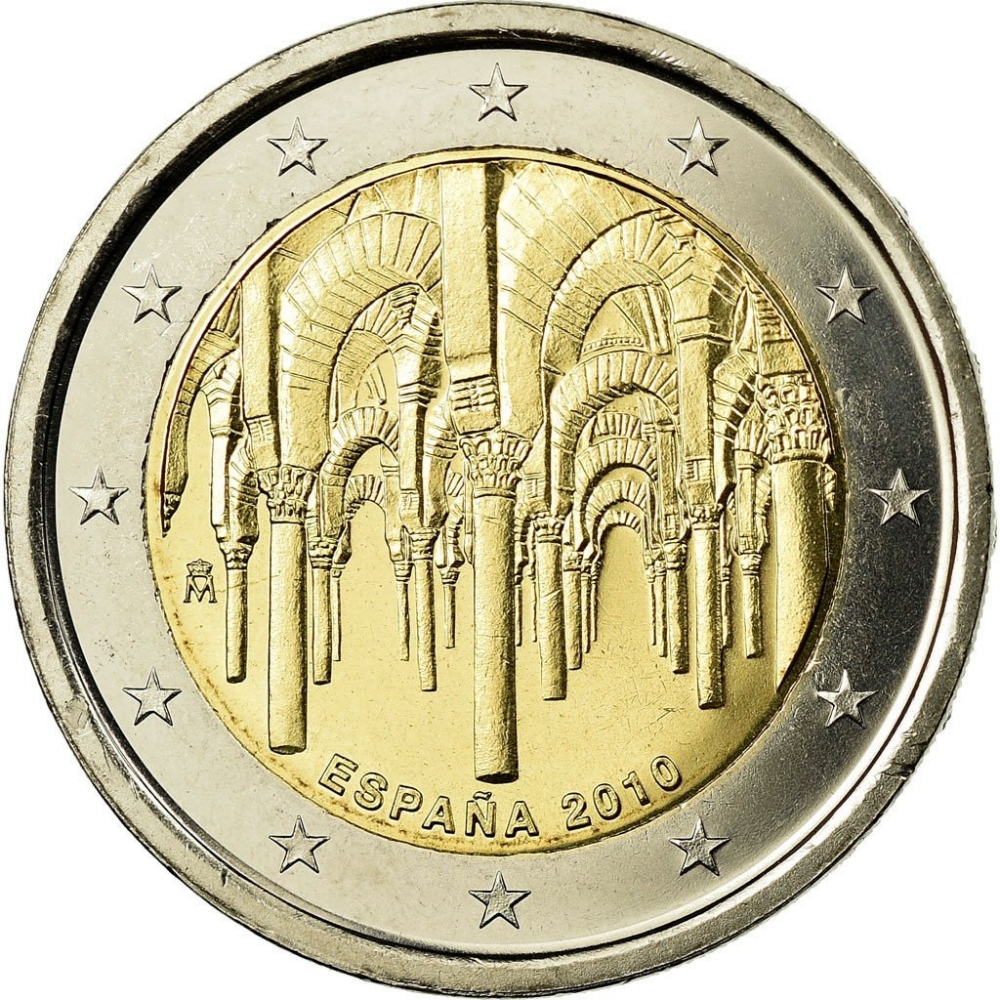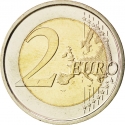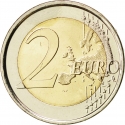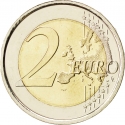You are about to finish your registration. Please check your mailbox (including spam folder). There should be a letter with a confirmation link. Check setting to make sure that your e-mail address is correct.
Send letter againDescription
Spain started the commemorative coin series Patrimonio de la Humanidad de la UNESCO (UNESCO World Heritage) in 2010, commemorating all of Spain's UNESCO World Heritage Sites, which could continue until 2050. The order in which the coin for a specific site is issued coincides with the order in which they were declared a UNESCO World Heritage site.
Obverse

|
Depicts the Mosque-Cathedral of Córdoba, mintmark (crowned M) on the left, country name and date below. The outer ring contains the twelve stars of the European Union. M |
|---|---|
Reverse

|
A geographical map of Western Europe spans the outer ring and inner core on the right side of the coin. The inscription 2 EURO is superimposed over the map of Europe, with the numeral “2” located in an open field representing the eastern Atlantic Ocean. 2 EURO |
| Edge |
The sequence "2 ★ ★" repeated six times alternately upright and inverted 2 ★ ★ 2 ★ ★ 2 ★ ★ 2 ★ ★ 2 ★ ★ 2 ★ ★ |
2 Euro
UNESCO World Heritage
Mosque-Cathedral of Córdoba
Subscribe series
KM# 1152 Schön# 471
UNESCO World Heritage
Mosque-Cathedral of Córdoba
Swap now (3 offers)
Characteristics
| Type | Commemorative Issue (Circulating) |
| Material | Bi-Metallic |
| Ring | Cupronickel |
| Center | Nickel Brass |
| Weight | 8.5 g |
| Diameter | 25.75 mm |
| Thickness | 2.2 mm |
| Shape |
|
| Alignment | Medal |
| Mint |
Royal Spanish Mint (FNMT-RCM)
|







